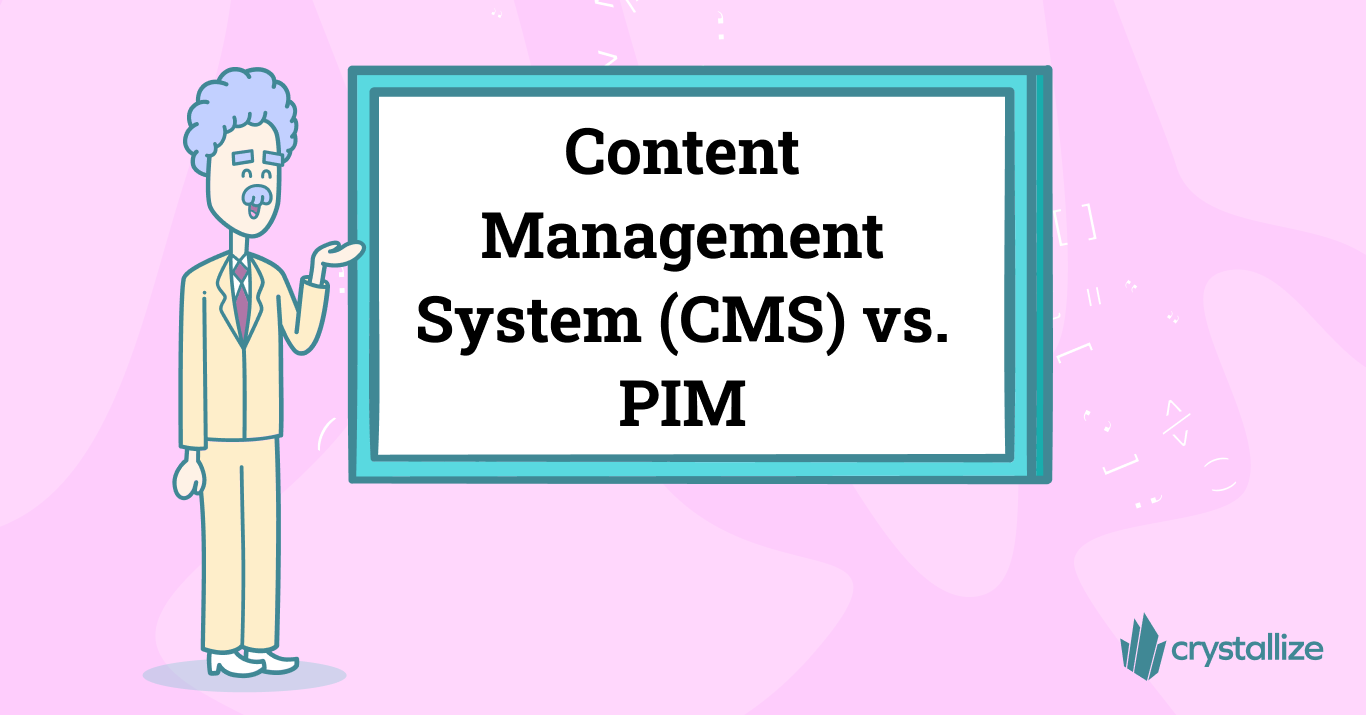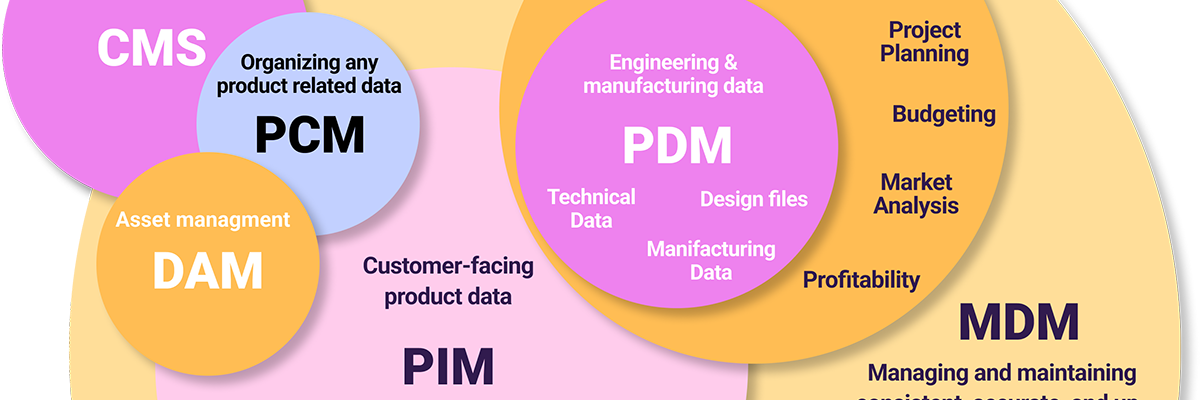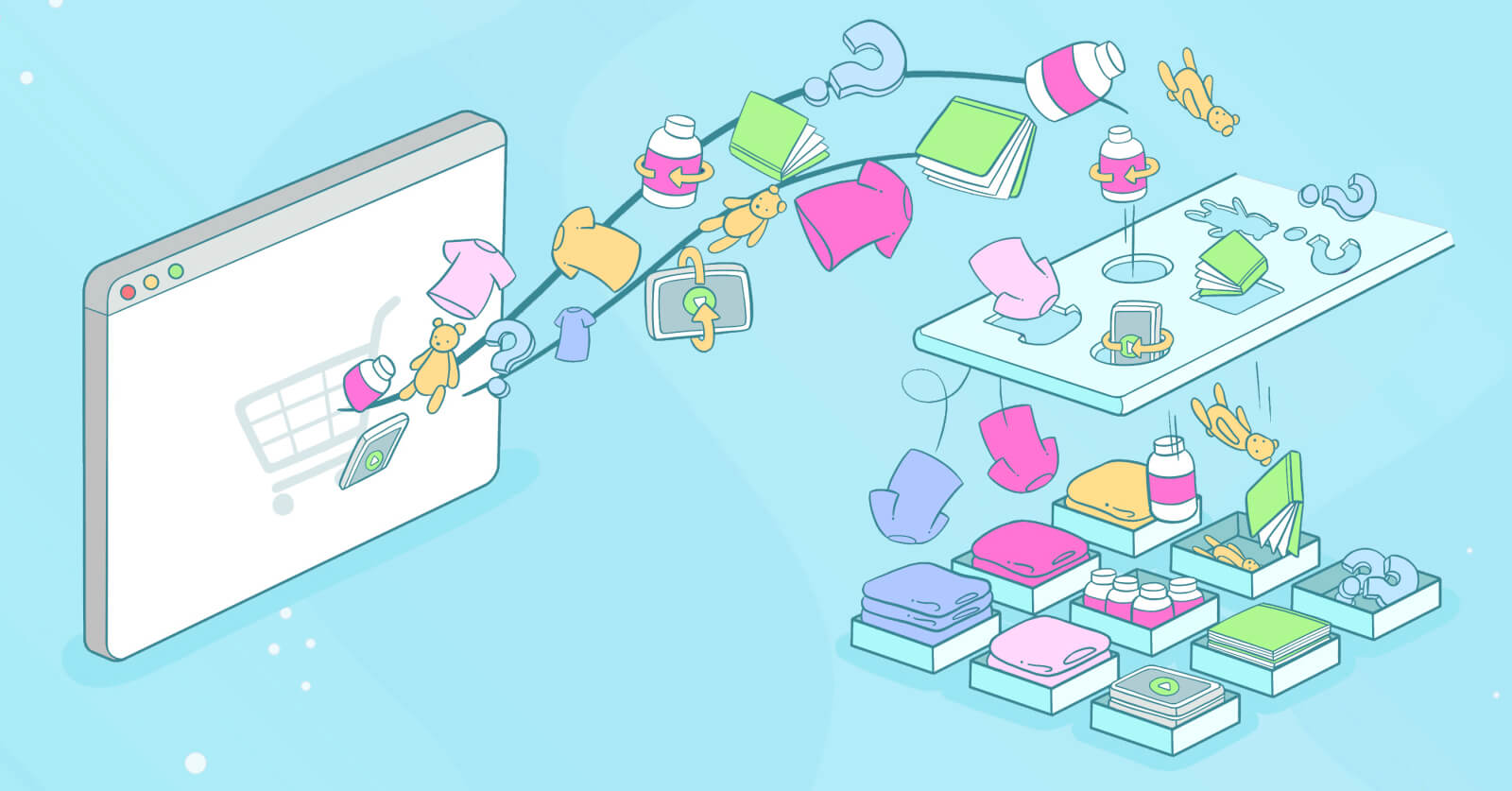PIM vs. CMS: Which One Do You Need?
When it comes to managing digital content, there are two main types of systems that professional businesses use (oftentimes together): Product Information Management (PIM) systems and Content Management Systems (CMS).

However, the content you manage through either of those is somewhat different, so today, here, we’ll try to explain the similarities and differences between the two and answer the question of how do you know which one to use for your project at hand.
What Is a Content Management System (CMS) Used for?
A Content Management System (CMS) is a software application that allows users to create, manage, and publish digital content, such as text, images, videos, and documents, without the need for technical knowledge or programming skills.
It is typically used for creating and maintaining websites, but it can also be used to push this content to other platforms (online and offline) or multiple platforms at once (more on that later).
Typically, it provides a user-friendly interface that allows non-technical users to add, edit, publish, and delete content, as well as to manage the website's structure and layout.
Finally, a CMS also provides functionalities like SEO, analytics, user management, even eCommerce, and various other functionalities to optimize and improve the performance of the website and user experience.
There are more than 1000 CMS solutions available on the market today. Basic and enterprise, monolith and headless.
What Is Monolithic CMS?
A monolithic CMS, also known as a traditional or coupled CMS, allows you to store, manage, and publish content to a website. You can do that because both, the backend functionalities and frontend presentation layer, are provided by the same codebase.
Like in the case of WordPress, a classic traditional monolithic-styled CMS and the reigning kind of CMSs that powers 43.1% of all websites.
What Is a Headless CMS?
A headless CMS is a type of content management system that separates where content is stored (the body or the backend) from where it is presented (the head or the front end).
This usually means that these websites are faster to load, more secure, and easier to manage, edit or upgrade. Moreover, a limit on the number of heads doesn’t exist, so you could be pushing content to your website, mobile app, and other digital platforms with only one click and from a single source.
However, note that a headless CMS will usually require you to have a web developer or two at your disposal.
The Best CMSs for 2023
- WordPress: WordPress is a widely-used open-source CMS that is known for its ease of use and flexibility. This wouldn’t be a CMS article without mentioning it!
- Drupal: Drupal is another open-source CMS, and it’s mostly used by large organizations and government agencies that require a high level of security and customization.
- Contentful: Contentful is a headless CMS, and it’s a popular choice for companies that need to deliver their content across multiple channels and devices. While other CMS tools on this list can also be developed as headless, it’s important to note that Contentful was designed with headless in mind.
💡Can Crystallize be used as CMS?
Rich content management is offered as an out-of-the-box feature in Crystallize. Because CMS is an integral part of our PIM, you can produce and manage interesting material that appeals to your audience in any language and via any channel you choose, all from a single source of truth for your goods.
The idea is to give you a single spot for all and all product info (including promo material) so that you don’t have to use multiple systems and tools, i.e., one for promo content management, one for asset management, one for classic product information management, etc.
How Does a CMS Differ from a PIM?
While these two types of software deal with similar data - in that they can both host product information such as images, product descriptions, etc. - they’re not quite the same.
Product Information Management (PIM) is designed to improve the efficiency and accuracy of product information so that a business can sell its products without risking out-of-date or inconsistent information. A CMS is designed to create, manage and publish website content for eCommerce websites, blogs, etc., but it cannot actually manage product information and relay it to other parties sensibly.
Think of PIM as your book editor and CMS as your publisher. Your PIM is in charge of collecting, reviewing, editing, and storing accurate product information as the single source of truth before exporting it to the CMS and publishing it for the world to see.
This eliminates the need to manually enter product information into the website manually, reducing the risk of errors and improving the efficiency of the website management process, ultimately resulting in a better customer experience and increased sales.
What About Product Content Management (PCM)?
Product Content Management (PCM) is used for creating, managing, sharing, organizing, and categorizing any product-related data. A PCM kind of sits in between CMS, DAM, PIM, and PDM, offering you greater control over product content that’s turned not only to your users but your stakeholders as well.
📑Managing Product Data and Tools You May Need Infographic.
What is PIM, and how different is it from PCM? Where do CMS and DAM overlap? And do you need CMS or PIM for your business use case? We’ve tried to clear up the acronym confusion in eCommerce with the following infographic that provides you with a visual comparison of all relevant terms. Individual posts dig deeper into each term and the concept behind it.
📝READ WHAT IS PIM AND DOWNLOAD THE INFOGRAPHIC FOR FREE FROM HERE

Advantages of Using CMS
Let’s say you’re a small business owner who wants to create and manage a website for their business, yet you don’t have technical knowledge or programming skills. To promote your products or services and reach out to customers, you need to have a professional website.
That’s where a CMS comes in. With it, you can easily create and update the website’s content, structure, and layout without ever having to know how to code.
You can easily integrate your CMS with other business tools you may be using (including a PIM, which is especially recommended if you’re using multiple platforms and selling multiple products), as well as take advantage of the CMS built-in tools such as SEO, analytics, etc., to increase your sales and maximize your efficiency ultimately.
Although some CMS solutions you can upgrade to include eCommerce functionality via different plugins (like the WordPress ecosystem), in general, CMSs are built with blogs or websites that require article-type of pages in mind (like general news websites or niche-focused websites like gaming related or review websites).
As already explained, Crystallize is a rare gem on the market that binds CMS, PIM, and eCommerce functionalities providing you with everything you may need to promote and sell your product. Not sure if you need a Crystallize or CMS solution? Don't worry. We got you covered.
Seriously, schedule a personal 1-on-1 Crystallize demo, tailor-made to your use case, to understand the ins and outs of Crystallize. Or, why not SIGN UP for FREE and get an unparalleled level of support from our team to help you get going.

